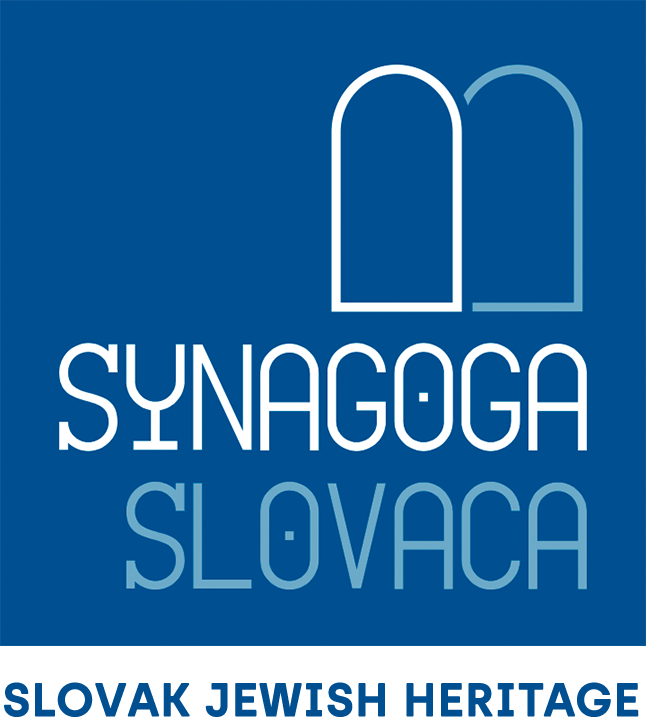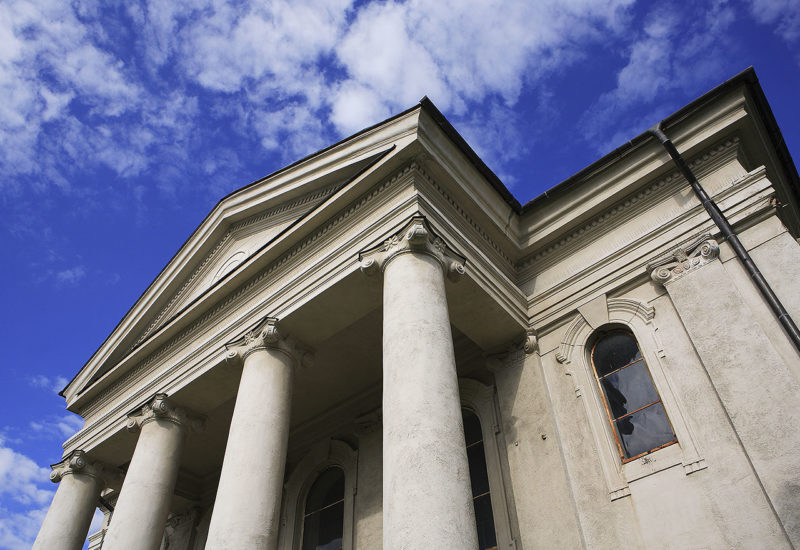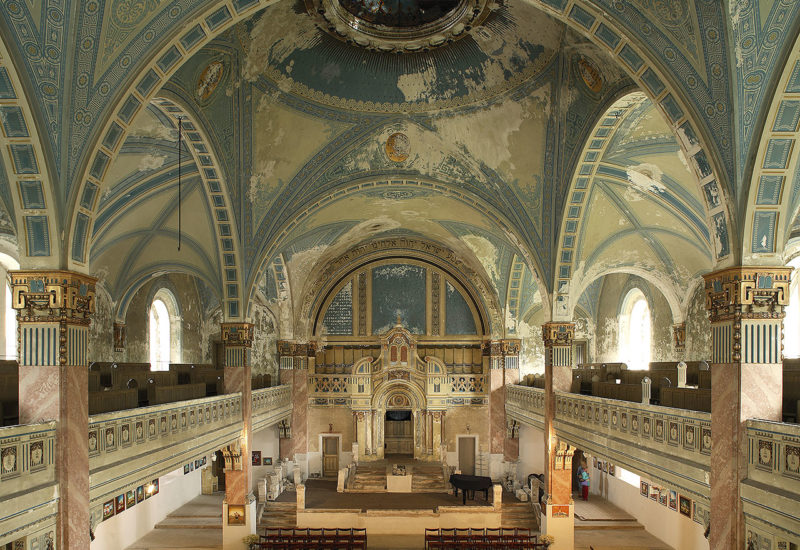Liptovský Mikuláš, Synagogue
An impressive edifice in the center of town, the synagogue is a blend of its various stages of construction. The original structure was destroyed by fire in 1878. Rebuilt, it was again damaged by fire in 1906. This time it was refurbished according to designs by the leading synagogue architect in the country, Lipót (Leopold) Baumhorn, from Budapest. Baumhorn retained the outer shell and neo-Classical portico with its Ionic capitols and tympanum. But the interior, which preserves the original ark, is sheer Baumhornian Art Nouveau. The original fittings survived until the 1980s; during the 1990s the building underwent a partial restoration for cultural purposes. The building is owned by the Federation of Jewish Communities in the Slovak Republic, but as there is no Jewish community in the town, it is used by the local Janko Kráľ Museum as one of its exhibition venues.
Historically, this town served as the seat of Liptov County, where for more than 200 years Jews were well-respected and socially integrated. The Jewish community began to develop in the eighteenth century, reaching 1,115 people, or nearly 40 percent of the total population, in 1880. In 1865 the town, then known as Liptovský Svätý Mikuláš, became the first town in Hungary to elect a Jewish mayor – Isaac Diner. Three more Jews followed in the office, a manifest sign of the city’s religious and cultural tolerance. The Jewish community belonged to the Neolog stream and before World War II numbered about a thousand people. There is no Jewish community in the city anymore. The Jewish cemetery disappeared in the 1980s, when it was expropriated by the municipality; the gravestones were stolen.
Address
Hollého 4
Liptovský Mikuláš
Coordinates
49°05’05.3″N
19°36’39.3″E


